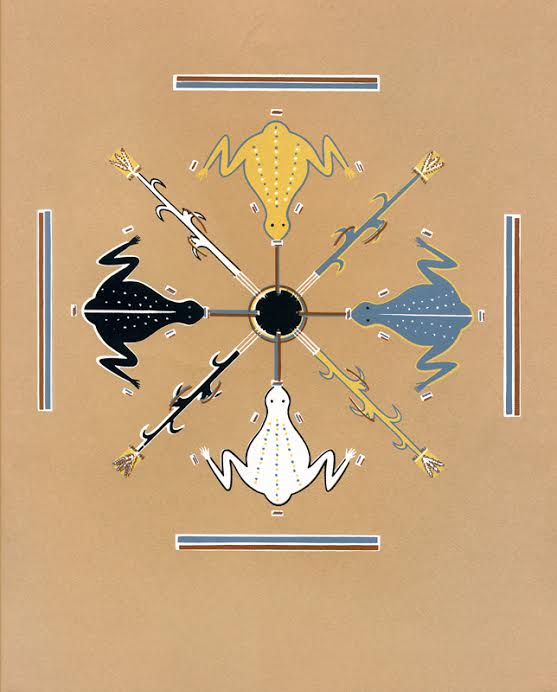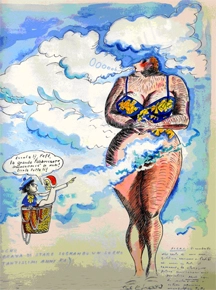ARAS Connections: Image and Archetype - 2017 Issue 4

As we wind down a turbulent 2017, it is time to reflect on what is of real value in a divisive and troubling time. We are lucky to find in Aurelie Athan, a Columbia University Professor and long time ARAS volunteer, a perfect spokesperson for the enduring value of ARAS. Her words might inspire you to make a contribution of any amount to ARAS by clicking here.
"It seems today, even more than ever, ARAS' relevance in our lives is calling to us. I know that for myself, and my students, dropping into the stillness of the Self and hearing it speak is the ultimate respite from the outside noise. Within, we find image, in all its multiple meanings. Our inner knowing has an important message for us and it is through connecting with it that we begin to understand what is important for our own and collective unfolding. This guidance is a true freedom I wish for everyone and ARAS is the jewel that makes it possible. If I could put a value on that I would donate the World to ARAS. A smaller gift of thanks might have to do instead, but will make a difference to continue supporting this oasis. Please donate today and help countless more discover their way back to Soul.”
As Aurelie Athan "would donate the World to ARAS", so too would "ARAS donate itself to the World" with your help.
In this edition of ARAS Connections, Sylvester Wojtkowski joins the search for what is of enduring value by taking us on a remarkable tour of Federico Fellini’s films. How apt is it to be publishing at this time a paper that focuses on the individuation of the monster. In Fellini's case the monster that inhabits the deeper layers of his psyche is the “giantess." What I find particularly compelling about Sylvester Wojtkowski’s work is that he goes straight to the archetypal level to sketch out an autonomous movement in the psyche that has a life of its own, that undergoes its own development and transformative processes, and that leads Fellini on his brilliantly creative imaginative journeys. This paper is important not only for what it teaches us about Fellini and the creative process, but also because it connects us or reconnects us with a core value of the Jungian tradition. The Self and other archetypal contents of the psyche live their own life and sometimes drag us screaming along into places that are full of surprise, delight, terror, and mystery. I suggest that you let yourself be led both by Aurelie Athan’s encouragement to give to ARAS so that ARAS can give to the world and by Sylvester Wojtkowski’s amazing skill at guiding us into the inner world of one of the greatest of all filmmakers.
Federico Fellini and the Giantess-- Individuation of the Monster

The dream is a little hidden door in the innermost and most secret recesses of the soul, opening into that cosmic night which was psyche long before there was any ego consciousness, and which will remain psyche no matter how far our ego-consciousness extends. [C.G.Jung CW 10, p. 304]
It is more meaningful to let the figures be what they were… namely events and experiences. [MDR, p. 182.]
“Open your heart. The movie you are about to make [81/2] is like a session with the psychoanalyst. You will discover more than you think. You have to make this film not so much for yourself as for art as an absolute.” [Kerner, a spirit voice, Federico Fellini: The Book of Dreams, p. 111.]
If left to himself, man can bring about his own salvation quite naturally; he has always produced symbols that redeemed him. So if we follow the laws [of fantasy] that are in our own nature, they will lead us to the right end. … You have got to trust yourself with your own experience, because according to the natural law, it will lead to the state of completeness. [C.G. Jung, Visions Seminars, p. 403.]
“Perhaps—who knows?—these eternal images are what men mean by fate.” [CW7: 183]
Jung defined individuation as becoming “in-divisible” and one with “who we are.” In this process ego has to develop engagement with non-ego images. James Hillman thought of individuation as a “psychological perspective” and a “differentiation of imagination.” Henri Corbin emphasized the “individuation of the angel”. In my presentation I will focus on the individuation of the monster. But, first a few words on the process of individuation itself.
INDIVIDUATION AS A FORM OF SUBJECTIVE TRANSFORMATION
I. Jung’s view of individuation
In 1939 in his Eranos lecture published as “Concerning Rebirth,” Jung describes eight human experiences that belong to the category of rebirth, or subjective transformation of personality. The last on his list is what he calls a "natural transformation or individuation":
“There are natural transformation processes which simply happen to us, whether we like it or not, and whether we know it or not.” [CW 9i, ¶234] Thus individuation is a natural, autonomous happening, that is an inborn capacity of the human subject, that can be conscious or not. Of course, when we are aware of it and participate in the process, we become conscious of change in our subjective sense of ourselves, and through our attention affect the process. Our conscious engagement comes about through dreams and active imagination, e.g., as depicted in Jung’s Red Book. Jung states that series of dreams over time can symbolize:
"the long-drawn-out process of inner transformation and rebirth into another being. This 'other being' is the other person in ourselves--that larger and greater personality maturing within us, whom we have already met as the inner friend of the soul." [CW 9i, ¶235 emphasis added]
Jung amplifies these two figures with the pair of Dioscuri, one mortal--Castor, one immortal—Pollux, children of Leda, who was seduced by Zeus in the form of swan. Castor would represent the ego and Pollux the other immortal being.
Read Federico Fellini and the Giantess-- Individuation of the Monster in its entirety here.
Become a Member of ARAS!
Become a member of ARAS Online and you'll receive free, unlimited use of the entire archive of 17,000 images and 20,000 pages of commentary any time you wish—at home, in your office, or wherever you take your computer.
The entire contents of three magnificent ARAS books: An Encyclopedia of Archetypal Symbolism, The Body and The Book of Symbols are included in the archive. These books cost $330 when purchased on their own.
You can join ARAS Online instantly and search the archive immediately. If you have questions, please call (212) 697-3480 or email info@aras.org
We Value Your Ideas
As our newsletter grows to cover both the ARAS archive and the broad world of art and psyche, we're eager to have your suggestions and thoughts on how to improve it. Please send your comments to info@aras.org. We look forward to your input and will reply to every message.
Subscribe
If you're not already a subscriber and would like to receive subsequent issues of this newsletter by email at no cost, e-mail us at newsletter@aras.org.
